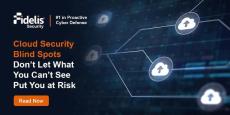- February 2025 (15)
- January 2025 (12)
- December 2024 (16)
- November 2024 (16)
- October 2024 (12)
- September 2024 (9)
- August 2024 (9)
- July 2024 (7)
- June 2024 (2)
- May 2024 (5)
- January 2024 (5)
Fidelis Security is the trusted leader in cybersecurity for enterprises and government organizations, providing the #1 proactive cyber defense solutions that detect post-breach attacks over 9 times faster.
One of our innovative products, Fidelis Elevate (an open and active XDR platform) is one of the best (in their respective category) against advanced adversaries. Fidelis Elevate is the only XDR Solution that delivers Endpoint security, Network Security, Deception, and Active Directory protection in a single platform.
Our other product, Fidelis Halo which is a CNAPP platform, unifies security and compliance for all servers, containers, and cloud assets to help protect, detect, remediate, and continually improve security for public, private, hybrid, and multi-cloud environments.

























